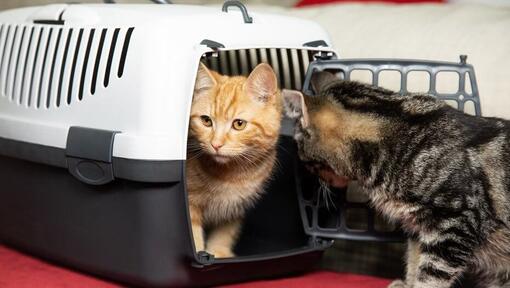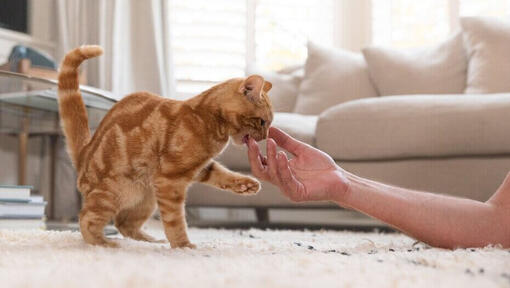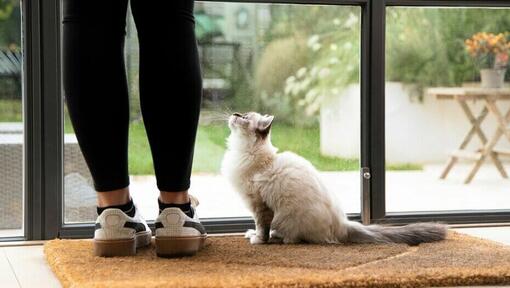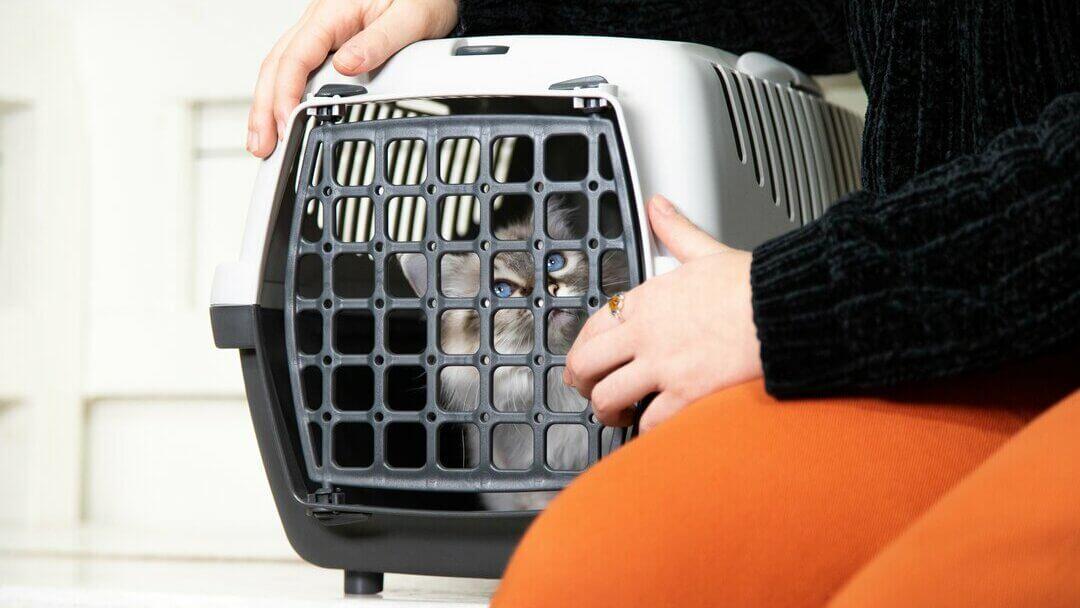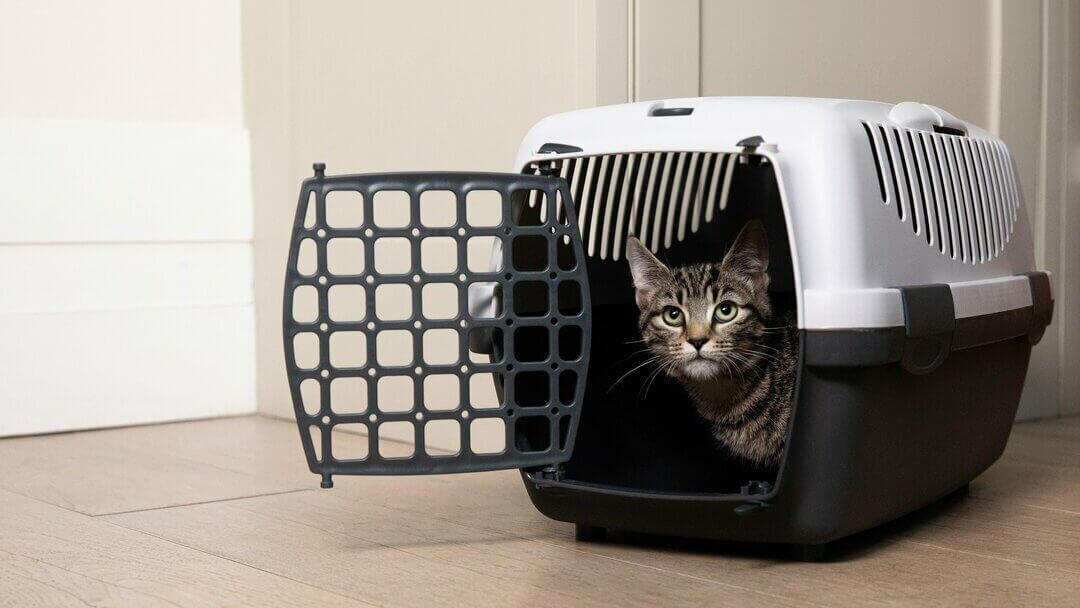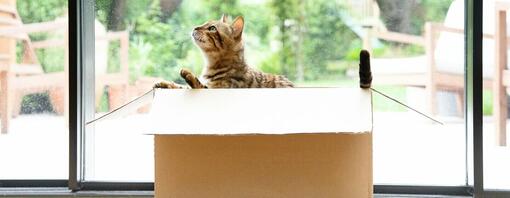
Cats love sharing your home with you. For them, it’s their territory - somewhere familiar and comforting where they can feel safe, secure and relaxed.
When you’re moving house with your cat, it’s bound to be disrupting, stressful and disorientating, for both of you! For your cat especially, it can be a real cause of anxiety. However, there are things you can do to help your cat keep calm during and after the move, and to help them feel comfortable in their new surroundings.
In the build-up to the big move, your home will start to feel very unsettled for your feline friend; packing boxes, strangers wandering in and out, new scents and the emptying of once-familiar rooms can all add to their anxiety. If your cat is used to staying with some familiar friends of yours or in a cattery, it may be a good idea to have them stay there for a short break to spare them the stress of the packing and the move.
If you decide on a cattery, book well in advance and make sure all their vaccinations are up to date. Read our article on cat sitting and catteries for more helpful tips and advice.
If you’d prefer to keep your cat with you during the move, set aside a quiet room in your old house and leave it untouched until the very last minute. Get them accustomed to that room about a week before you move by placing their bed, litter tray, toys, food and water bowls in there. This will give them a space to go to be out of the way of all the hustle and bustle – and also be someplace you know they will be safe.
"Once you’ve moved home with your cat it will take them several weeks to get used to their new surroundings and feel at home before you let them go outdoors."
Leaving your old home
If you’re using a removal company, let them know in advance that you’re also moving a cat to a new house, as well as your furniture you’re also moving a cat to a new house. They’ll need to know which room has been designated for your cat, so they don’t disturb them in their quiet den. Try and find a way to lock this door and put a large notice on it too. You do not want any possibility of the removal men accidently letting your cat escape.
Ideally just before the removal team arrives, give your cat a reassuring cuddle or soothing stroke and place them gently into their travel basket with a supply of fresh water. If you’re concerned that your cat will get stressed it can be a good idea to spray their basket with a calming pheromone before you put them inside (available from your vet or larger pet stores) and cover it with a cloth to keep it dark and calm. You can then leave them in their basket in their “safe” room while you make your final rounds.
For advice on taking your cat in the car, read our article on travelling with your cat (you’ll also find information on moving house with your cat to another country by plane).
Remember, if your cat wears a collar, you’ll need to swap any identity tag on the day you move for one with your new address and phone number and most importantly, don’t forget too that you need to supply your new details to their microchip registration company and let them know the date of the move. As of 10th June 2024, this is now a legal requirement.
The last thing you need on moving day is an escaped cat with out-of-date ID! The final piece of admin to take care of is registering your cat with a new vet, if you’re moving to a new area. This is best done in advance and not wait until you have an emergency!
Arriving at your new home
The secret to moving a cat to a new house is familiarity, so start to make your new surroundings more recognisable for your cat as soon as you can after you arrive. This includes scent and much as it does familiar sights and furnishings.
Similarly to how you prepared a “safe haven” in your old house, fill one room in your new home with your cat’s bed, litter tray, toys and a bowl of fresh water.
When you’re soothing them with strokes, gently rub a soft cloth on their face and neck. This will pick up their natural pheromones, which you can then wipe onto new surfaces in the house at cat height to help your cat feel more secure. You can also add a worn cosy jumper of yours or an old towel to their bedding to surround them with more reassuring scents.
Synthetic pheromones can also help to reassure your cat, which you can use via a spray or diffuser – have a chat with your vet for their recommendation or pop into a large pet store to see what options they have.
Now that you’ve done all you can to make your cat as comfortable as possible, you’ll want to give your cat some uninterrupted peace and quiet while they explore their new surroundings. Keep the door to their room shut until the removals team has left and you’ve checked that all doors and windows are firmly closed. Only once you’re fully moved in should you open the door and let them take a look around the rest of the house. Even then, only do one room at a time to allow them time to take it all in.
Settling in after moving house with your cat
Once you’ve moved home with your cat you need to give outdoor felines several weeks to get used to their new surroundings before you let them go outside unless you have a catio. Some cats accept their new home quite quickly and act like they’ve always been there, while others need time to adapt. It can help if you’re able to spend some time with them at home in the first few days and weeks to help them settle in better. Don’t rush things; let them take as long as they need to get used to the sounds and smells in their new environment. For more advice on settling your cat in, read our article on welcoming your cat home.
When moving house with your cat, you should consider the following:
- If you haven’t moved very far from where you used to live, you might find your cat tries to return to their old stomping ground where they know the sights and smells. If so, keep them indoors a little longer until they recognise your new home as their new safe territory.
- It’s a good idea to speak to the new owners of your old address and ask them not to feed your cat or allow them back into the house if they do sneak back there! Remember, their collar might still activate their old cat flap so it’s worth replacing their collar with one that only works in your new home.
- When you introduce your cat to their new garden and outside space, keep the outings short and keep an eye on them. The best way to do this is to let them out just before mealtimes then, once they’ve had a chance to explore for a few minutes, you can make familiar feeding time noises, such as clanging bowls or shaking bags of food, to entice them back inside. Over the course of a week or two, gradually extend the length of their outdoor visits but don’t let them out after dark or completely unsupervised until you’re sure they’re confident in their new surroundings.
- Finally, take extra precautions if you know that something is coming up that could alarm your cat – like fireworks or a storm. These can be disorientating to any cat, let alone one that’s already nervous, so make sure they have a safe, warm place to hide. Synthetic pheromones and soothing strokes from you should help them to stay calm and stop them panicking and perhaps trying to run back to their old home.
Before long they’ll discover that their new home is just as welcoming and loving as their old one, and they’ll soon enjoy exploring their new world. All it takes is a little patience and a lot of understanding.


